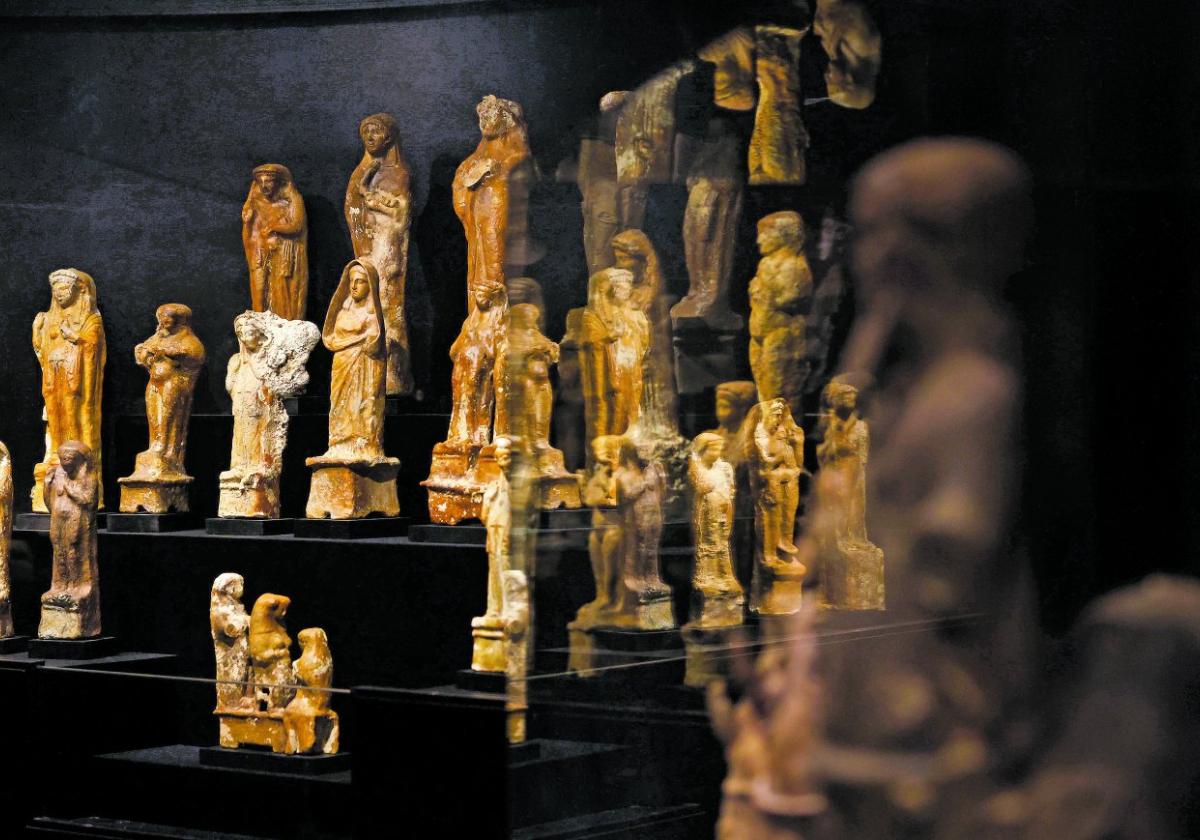Collection of 200 ancient Phoenician terracotta figures to stay in Malaga
The Ifergan Gallery has catalogued the pieces recovered from the sea off Tyre, Lebanon, which date back nearly 3,000 years
Francisco Griñán
Malaga
Friday, 12 April 2024, 13:48
The Phoenicians ruled the Mediterranean before the Greeks and Romans. A reminder of this is a collection of 201 Phoenician terracotta figures, retrieved from the sea near Tyre (one of the civilisation's major cities, in modern-day Lebanon), which is to remain in Malaga indefinitely.
Following an announcement last year that they were on sale, the Ifergan Gallery's star pieces - the biggest private collection of its kind - will now continue to occupy the exhibition room on Calle Sebastián Souvirón, close to the Central Market. Securing the permanence of the collection in Malaga is thanks to the support of archeologist Eduardo García Alfonso, who has curated the gallery's new catalogue, which includes this precious collection. It also features the first scientific study on these votive sculptures from Tyre.
Ifergan Collection
-
Name
NameIfergan Collection.Pieces201 Phoenician terracotta figures recovered near Tyre in 1958, after almost 3,000 years on the sea bed.PriceGeneral entry, 7 euros; residents in Malaga, students and pensioners 3.50 euros.LocationCalle Sebastián Souvirón, 9, Malaga.
A specialist in the Phoenician civilisation and head of communications at the Museum of Malaga, García Alfonso explained this new phase of the gallery owned by collector Vicente Jiménez Ifergan. After unveiling this archeological exhibition in 2018, comprising half the terracotta figures as well as Mesopotamian, Greek, Egyptian, Roman and Arab art, the gallery proposed a temporary transfer of the two hundred Phoenician sculptures to the Museum of Malaga. However, the idea never came to fruition due to the arrival of the pandemic.
This left the gallery's future uncertain; it remained closed and many of its pieces were put on sale and sold. The exhibition, however, reopened last summer, with the private collection of Phoenician terracotta figures - which remained intact. The collector has now opted to highlight the importance of these treasures through their cataloguing and study.
In the absence of Jiménez Ifergan, who has been doing humanitarian work in Ukraine since the start of the war with Russia, Eduardo García Alfonso explained this week that the businessman and philanthropist has committed to "not selling this collection because he has a special appreciation and affection for it". In addition, they would have to be sold separately if they were to be put on the market, and the current owner has put "as the only condition that it has to remain as one while he is living".
García Alfonso's study brings a fresh perspective on the origin of these sculptures: it was believed that they were part of a ship's cargo, which, in an attempt to save these divine figures from the siege of Tyre by Alexander the Great in the 4th century BC, ended up at the bottom of the sea, sunk by the Greeks.
There was no shipwreck
This romantic vision is one which the archeologist prefers to replace with a more scientific version. "Temples would be filled with these votive offerings to the gods, and every so often, they would be buried in order to liberate these sacred spaces, therefore my hypothesis is that in Tyre, they were thrown into the sea, an idea that has more basis than that of a sunken ship," explained the archeologist. He added that there are three areas in Tyre where these sculptures appeared, in some cases over 2,000 rescued pieces, which reinforces his theory that in reality "they were thrown into the sea as offerings, which also happened during the Phoenician period in Cadiz". They remained at the bottom of the Mediterranean Sea until the 1950s, when fishermen started recovering hundreds of these pieces through the use of new fishing techniques such as trawling.
Devotion to the gods
The figures also reveal lesser known facts about Phoenician culture, such as their gods and their religious fervour. For instance, the start of the tour features a figure of a priest, over one metre high, as well as a triton, which represents Pontus, god of the sea. Both have their hands in the air, as if to welcome people into the collection, although visitors would soon realise that this greeting gesture is common in representations of the gods Astarte, Melqart or Tanit. "Raised hands are a sign of protection, which was already used in Egyptian art," the archeologist concluded.
